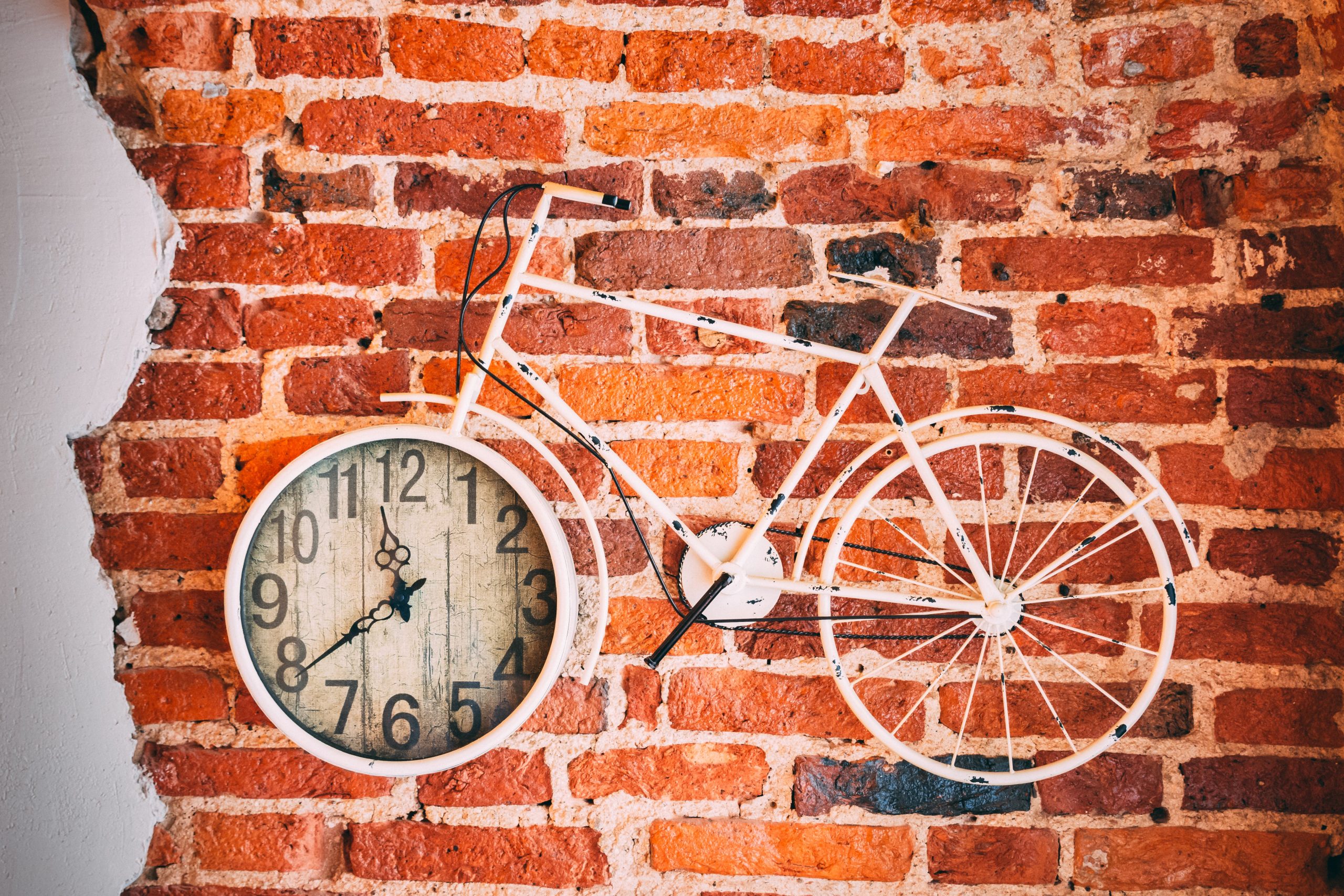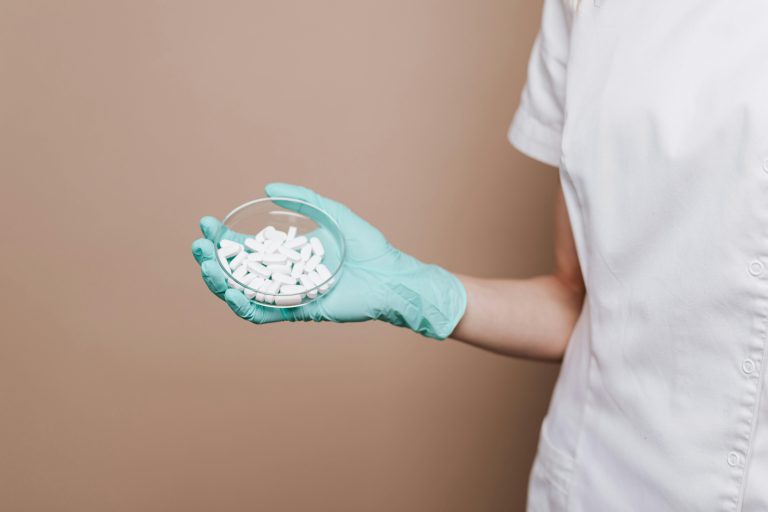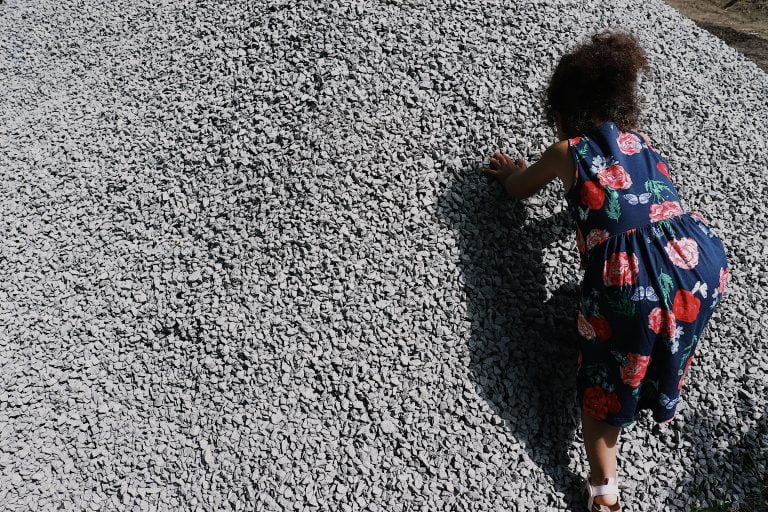Iron deficiency anemia is a common condition that affects millions of people worldwide, primarily women. It occurs when the body lacks enough iron to produce hemoglobin, which is responsible for carrying oxygen to the body's tissues. Without sufficient iron, the production of red blood cells is reduced, leading to fatigue, weakness, and other symptoms. While iron supplements are widely available, incorporating iron-rich drinks into your diet can be a delicious and convenient way to boost your hemoglobin levels.
Understanding Iron Deficiency Anemia
Iron deficiency anemia occurs when the body does not have enough iron to produce adequate amounts of hemoglobin. Hemoglobin is a protein found in red blood cells that carries oxygen from the lungs to the rest of the body. When there is a shortage of iron, the body cannot produce enough red blood cells, resulting in a decrease in oxygen delivery.
The Importance of Iron in the Body
Iron plays a vital role in the body, as it is necessary for the production of hemoglobin. Hemoglobin binds to oxygen in the lungs and carries it to every cell in the body, ensuring proper functioning. Iron is also involved in various enzymatic reactions and is essential for normal growth and development.
Symptoms of Iron Deficiency Anemia
Iron deficiency anemia can lead to a range of symptoms, including:
– Fatigue
– Weakness
– Pale skin
– Shortness of breath
– Dizziness
– Headaches
– Cold hands and feet
– Brittle nails
– Fast or irregular heartbeat
If you experience these symptoms, it is important to consult a healthcare professional for proper diagnosis and treatment.
Causes of Iron Deficiency Anemia
There are several causes of iron deficiency anemia, including:
– Inadequate dietary intake: Consuming a diet low in iron-rich foods can lead to iron deficiency anemia. This is especially common in individuals who follow vegetarian or vegan diets, as plant-based sources of iron are less readily absorbed by the body.
– Blood loss: Women of childbearing age are at higher risk of iron deficiency anemia due to menstrual blood loss. Other causes of blood loss, such as gastrointestinal bleeding or chronic use of nonsteroidal anti-inflammatory drugs (NSAIDs), can also contribute to iron deficiency anemia.
– Pregnancy: Pregnant women have increased iron requirements to support the growth and development of the fetus. If iron intake is inadequate, iron deficiency anemia can occur.
Diagnosing Iron Deficiency Anemia
If you suspect you may have iron deficiency anemia, it is important to see a healthcare professional for an accurate diagnosis. Diagnosis typically involves a physical exam, medical history assessment, and blood tests.
The most common blood tests used to diagnose iron deficiency anemia include:
– Complete blood count (CBC): This test measures the number of red blood cells, hemoglobin levels, and other components in the blood. Low hemoglobin levels are indicative of anemia.
– Serum ferritin: Ferritin is a protein that stores iron. A low level of serum ferritin suggests iron deficiency.
– Transferrin saturation: Transferrin saturation measures the percentage of iron binding sites on transferrin that are filled with iron. Low transferrin saturation is a sign of iron deficiency.
It is important to consult with a healthcare professional to interpret the results of these tests and determine the appropriate treatment plan.
Treating Iron Deficiency Anemia
Treating iron deficiency anemia involves replenishing iron stores in the body. This can be accomplished through dietary changes, iron supplementation, or a combination of both.
Incorporating Iron-Rich Drinks into Your Diet
When it comes to boosting your iron levels, incorporating iron-rich drinks into your diet provides a convenient and delicious way to increase your intake. These drinks can be easily prepared at home or purchased from health food stores.
Why Opt for Iron-Rich Drinks
Iron-rich drinks offer several advantages when it comes to addressing iron deficiency anemia. Firstly, they provide a concentrated source of iron that is easily absorbed by the body. In some cases, the iron content in these drinks can be higher than that found in traditional food sources. Additionally, iron-rich drinks are often fortified with other vitamins and minerals, making them a nutritionally dense choice.
Precautions and Considerations Before Trying Iron-Rich Drinks
While iron-rich drinks can be beneficial in boosting iron levels, it is essential to consider the following precautions:
– Consult with a healthcare professional: Before incorporating iron-rich drinks into your diet, it is crucial to consult with a healthcare professional, especially if you have any underlying health conditions or are taking medications.
– Balance with other nutrients: While iron is important, it is equally important to have a balanced diet that includes a variety of nutrients. Do not solely rely on iron-rich drinks and make sure to incorporate other sources of vitamins, minerals, and macronutrients into your meals.
– Be mindful of total iron intake: Overconsumption of iron can have adverse effects on your health. Be careful not to exceed the recommended intake of iron, especially if you are already taking iron supplements.
Now, let's explore some iron-packed drinks that can help amp up your hemoglobin levels.
Prune Juice: A Natural Source of Iron
Prune juice, made from dried plums, is a delicious and nutritious drink that is naturally rich in iron. Prunes have been used for centuries as a traditional remedy for constipation, but they also offer a slew of other health benefits.
How Prune Juice Helps Improve Hemoglobin Levels
Prune juice is an excellent source of iron, containing about 1 mg of iron per 100 grams. Iron plays a crucial role in the production of hemoglobin, which is responsible for carrying oxygen to the body's tissues. By incorporating prune juice into your diet, you can help boost your iron intake and support the production of healthy red blood cells.
Ways to Incorporate Prune Juice into Your Diet
Prune juice can be enjoyed on its own or mixed with other juices to create a unique flavor profile. Here are some creative ways to incorporate prune juice into your routine:
– Prune juice smoothie: Blend prune juice with your favorite fruits like bananas, berries, and spinach for a nutritious and iron-packed smoothie.
– Prune juice mocktail: Mix prune juice with sparkling water, a squeeze of lemon juice, and a sprig of mint for a refreshing and iron-rich drink.
– Prune juice popsicles: Freeze prune juice in ice pop molds for a tasty and cooling treat on a hot day.
Beetroot Juice: A Powerful Blood Booster
Beetroot juice is a vibrant and nutrient-rich drink that is known for its ability to boost blood flow and increase hemoglobin levels. This crimson-colored juice is a powerhouse of nutrients, including iron.
The Iron Content in Beetroot Juice
Beetroot juice is a great source of iron, containing approximately 0.8 mg of iron per 100 grams. This iron content, along with other essential nutrients, makes beetroot juice an ideal choice for individuals looking to increase their iron intake.
Creative Ways to Include Beetroot Juice in Your Routine
Beetroot juice can be enjoyed in a variety of ways. Here are some creative ways to incorporate beetroot juice into your routine:
– Beetroot juice shot: Take a small shot of beetroot juice in the morning to give your body a quick iron boost.
– Beetroot juice smoothie: Blend beetroot juice with fruits like pineapple, apple, or orange for a vibrant and iron-rich smoothie.
– Beetroot juice latte: Mix beetroot juice with almond milk, a sprinkle of cinnamon, and a drizzle of honey for a cozy and nutritious latte.
Pea Protein Shakes: A Nutritional Powerhouse
Pea protein shakes are a fantastic choice for individuals looking to boost their iron intake while also increasing their protein levels. Pea protein, derived from yellow peas, is a plant-based protein that is highly digestible and offers numerous health benefits.
The Benefits of Pea Protein for Anemia
Pea protein contains approximately 5 mg of iron per serving, making it an excellent choice for individuals with iron deficiency anemia. In addition to its iron content, pea protein is also rich in essential amino acids, which are the building blocks of protein and play a vital role in various bodily processes.
Delicious Pea Protein Shake Recipes
Here are two delicious pea protein shake recipes to help boost your iron levels:
1. Berry Blast Shake:
– 1 scoop of pea protein powder
– 1 cup of frozen mixed berries
– 1 cup of almond milk
– 1 tablespoon of chia seeds
– A handful of spinach (optional)
– A drizzle of honey (optional)
Combine all the ingredients in a blender and blend until smooth. Enjoy this delicious and iron-packed shake as a meal replacement or post-workout snack.
2. Green Goddess Shake:
– 1 scoop of pea protein powder
– 1 ripe banana
– 1 cup of almond milk
– 1 tablespoon of almond butter
– A handful of spinach
– 1 tablespoon of hemp seeds
– A drizzle of maple syrup (optional)
Blend all the ingredients together until creamy and enjoy this nutritious shake as a part of your daily routine.
Mint Juice: Refreshing and Iron-Packed
Mint juice is a refreshing and flavorful drink that offers a host of health benefits. While it may not be as commonly known for its iron content, mint is indeed a good source of iron.
The Iron Content in Mint Juice
Mint leaves contain approximately 2.7 mg of iron per 100 grams, making mint juice a worthy addition to your iron-rich drinks list. In addition to its iron content, mint can also aid in digestion and offer a cooling sensation.
Exploring Different Mint Juice Variations
Mint juice can be enjoyed on its own or mixed with other ingredients to create unique flavor combinations. Here are some variations of mint juice that you can try:
– Mint lemonade: Squeeze fresh lemon juice into a glass of mint-infused water and sweeten with honey or a natural sweetener of your choice.
– Mint cucumber cooler: Blend fresh mint leaves with cucumber, lime juice, and a touch of honey for a refreshing and hydrating beverage.
– Mint iced tea: Brew a pot of your favorite tea and infuse it with fresh mint leaves. Add some ice cubes and a slice of lemon for a refreshing twist.
Manathakkali Juice: A Traditional Remedy for Anemia
Manathakkali juice, also known as black nightshade juice, is a traditional remedy for anemia in many Asian cultures. This unique juice packs a punch when it comes to iron content.
How Manathakkali Juice Boosts Hemoglobin
Manathakkali leaves are a rich source of iron, with approximately 6.3 mg of iron per 100 grams. Consuming manathakkali juice regularly can aid in boosting hemoglobin levels and combating iron deficiency anemia.
Traditional and Modern Recipes for Manathakkali Juice
Traditionally, manathakkali juice is made by blending the leaves with some water and straining the pulp. However, if you prefer a more modern take on this traditional drink, here's a recipe that incorporates other nutritious ingredients:
– 1 handful of manathakkali leaves
– 1 green apple
– 1 small piece of ginger
– 1 tablespoon of honey or a natural sweetener of your choice
– Water (as needed)
Blend all the ingredients together until smooth. If desired, strain the juice before consuming. Sip on this nourishing juice regularly to ensure adequate iron intake.
Mulberry Smoothie: A Tasty Way to Boost Iron Levels
Mulberries are a delicious and nutritious fruit that can be enjoyed in a variety of ways. Whether eaten fresh or blended into a smoothie, mulberries can help increase your iron levels.
The Iron Content in Mulberries
Mulberries are a good source of iron, containing approximately 1.85 mg of iron per 100 grams. Incorporating mulberries into your diet can provide a tasty way to boost your iron intake.
Creative Mulberry Smoothie Recipes for Anemia
Here are two mulberry smoothie recipes to incorporate into your diet:
1. Mulberry Banana Smoothie:
– 1 cup of fresh mulberries
– 1 ripe banana
– 1 cup of almond milk
– 1 tablespoon of almond butter
– A drizzle of honey or a natural sweetener of your choice
Blend all the ingredients together until smooth, and enjoy this creamy and iron-packed smoothie as a snack or part of your breakfast routine.
2. Mulberry Spinach Smoothie:
– 1 cup of fresh mulberries
– 1 cup of spinach
– 1 ripe pear
– 1 cup of coconut water
– 1 tablespoon of chia seeds
Blend all the ingredients together until creamy and enjoy this nutritious smoothie to boost your iron levels and support overall health.
Sesame Seeds and Dates Smoothie: Nutrient-Dense and Delicious
Sesame seeds and dates are two nutrient-dense ingredients that can be combined to create a delicious and iron-rich smoothie. This combination provides a variety of essential nutrients and minerals, including iron.
The Iron and Nutrient Benefits of Sesame Seeds and Dates
Sesame seeds are an excellent source of iron, with approximately 14 mg of iron per 100 grams. They are also rich in calcium, magnesium, and other essential minerals.
Dates, on the other hand, are a natural sweetener and are packed with nutrients like iron, potassium, and fiber. By combining these two ingredients, you can create a nutrient-dense and iron-packed smoothie.
Easy-to-Make Sesame Seeds and Dates Smoothie Recipes
Here are two simple recipes to enjoy the benefits of sesame seeds and dates:
1. Sesame and Date Shake:
– 1 tablespoon of sesame seeds
– 4-5 pitted dates
– 1 cup of almond milk or any milk of your choice
– A pinch of cinnamon (optional)
Blend all the ingredients together until smooth. This creamy and iron-rich shake can be enjoyed as a snack or post-workout drink.
2. Sesame Date Smoothie Bowl:
– 2 tablespoons of sesame seeds
– 4-5 pitted dates
– 1 frozen banana
– 1 cup of spinach
– ½ cup of almond milk or any milk of your choice
– Toppings: sliced fruits, granola, coconut flakes, or chia seeds
Blend all the ingredients together until creamy. Pour the smoothie into a bowl and top with your favorite toppings for a nutrient-packed and visually appealing meal.
Lifestyle and Dietary Tips for Supporting Iron Absorption
In addition to incorporating iron-rich drinks into your diet, there are several lifestyle and dietary tips that can help enhance iron absorption and support optimal hemoglobin levels.
Foods to Eat for Better Iron Absorption
– Vitamin C-rich foods: Consuming foods high in vitamin C, such as citrus fruits, strawberries, bell peppers, and kiwi, can enhance iron absorption.
– Iron-rich foods: Incorporate iron-rich foods into your meals, including lean meats, poultry, seafood, legumes, tofu, tempeh, dark leafy greens, and fortified cereals.
– Cooking in cast-iron cookware: Cooking acidic foods like tomatoes or lentils in cast-iron cookware can increase the iron content of the dish.
– Pairing iron-rich foods with heme iron enhancers: Heme iron enhancers, such as meat, poultry, or fish, can increase the absorption of non-heme iron found in plant-based foods.
Foods and Drinks to Avoid for Optimal Iron Absorption
– Calcium-rich foods: Calcium can impair iron absorption. Avoid consuming high-calcium foods, such as dairy products, at the same time as iron-rich foods or supplements.
– Phytates and oxalates: Certain compounds found in whole grains, legumes, spinach, and beet greens can inhibit iron absorption. Soaking, fermenting, or sprouting these foods can help reduce their phytate and oxalate content.
– Tannins: Tannins, present in tea and coffee, can hinder the absorption of iron. Avoid consuming these drinks close to meals or with iron-rich foods.
When to Seek Professional Help for Iron Deficiency Anemia
While incorporating iron-rich drinks into your diet can be beneficial, it is important to recognize when it is necessary to seek professional help for iron deficiency anemia. If you experience severe symptoms, worsening of symptoms, or if your symptoms persist despite making dietary changes, it is crucial to consult with a healthcare professional.
Additionally, if you have any pre-existing health conditions or are taking medications, it is important to discuss your iron supplementation or dietary changes with a healthcare professional.
Conclusion
Introducing iron-packed drinks into your diet can be a simple and enjoyable way to boost your hemoglobin levels and combat iron deficiency anemia. Prune juice, beetroot juice, pea protein shakes, mint juice, manathakkali juice, mulberry smoothie, and sesame seeds and dates smoothie are just a few examples of the many delicious and nutrient-dense options available. Remember to consult with a healthcare professional for proper diagnosis and treatment, and to maintain a balanced diet that includes a variety of iron-rich foods and other essential nutrients. Cheers to your health and increased iron levels!




